Dell XPS 13 Review
by Brett Howse on February 19, 2015 9:00 AM EST- Posted in
- Laptops
- Dell
- Ultrabook
- Broadwell-U
- XPS 13
Display
Dell offers two display choices in the XPS 13. The base model comes with an IPS 1920x1080 (Full HD, or FHD) Sharp 1420 panel, with LED backlighting of course. The upgrade is to the Sharp 1421 panel, which increases the resolution to 3200x1800 (QHD+), for 272 pixels per inch. Even 1080p on a 13.3 inch panel is a nice resolution, but the high DPI display really shines, especially in the new Windows 8 environment. Desktop apps can still have some issues with High DPI, but it is becoming less of a problem over time.
Sharp is the maker of all IGZO displays, which we have seen before in a couple of other devices such as the Razer Blade. The big benefit to IGZO (Indium Gallium Zinc Oxide) panels is they allow more light through the display, reducing the power requirements for the backlight. This generally means that we get to keep the full RGB stripe, which should help with color accuracy.
Being able to see both sets of pixels just shows how many more pixels are packed into the High DPI panel. 1080p is around 2 million pixels and 3200x1800 is 5.76 million pixels. It is a big difference and gives a big increase to clarity, but it comes with the cost of increased power usage, despite the IGZO TFT.
Dell has the displays listed as IPS (In-Plane Switching) panels on their spec sheet, and they do not seem to have any of the off-angle color shift of a VA (Vertical Alignment) design. Whatever the display type, it certainly is not TN (Twisted Nematic) so even at extreme angles there is not the loss of contrast associated with those displays. Also, you can see the anti-glare coating on the FHD pixels, which is the distortion shown on the subpixels.
To test the panels, we turn to SpectralCal’s CalMAN 5 software suite, the X-Rite i1Display Pro Colorimeter for brightness and contrast measurements, and the X-Rite i1Pro Spectrophotometer to measure the color accuracy.
One more note about the Dell displays though is that they have an auto-brightness adjustment with no way to disable it. It seems to manifest itself the most, and the most severe, when there are large contrast changes on-screen. For this reason, our automated testing for the color accuracy would not work at all because of the abrupt changes on the screen as it flashed among the various colors. This would cause the screen to go bright and dim and caused some very erroneous readings.
I was able to get around it for the color testing by manually going to on-screen color patterns, however display calibration is impossible with this brightness adjustment so that was skipped. I have contacted Dell to inquire about this issue and will give an update if they get back to me.
Update: Dell has enabled Content-Adaptive Backlight Control, which we have seen in other devices like the Nokia Lumia 930. Dell has let me know they are looking into a way to have the end user disable this feature.
First up is the brightness, contrast, and black levels.
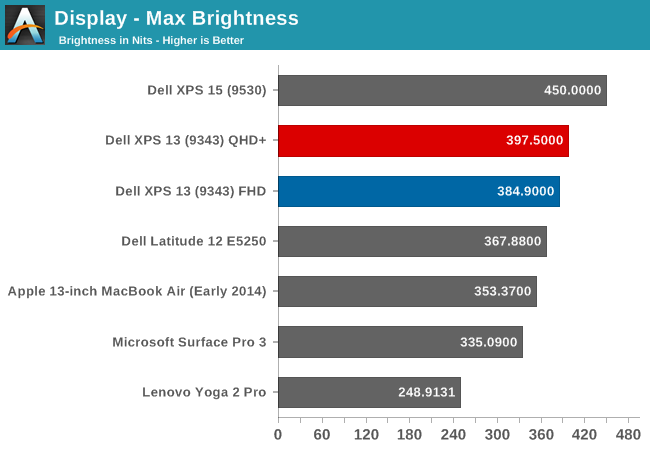
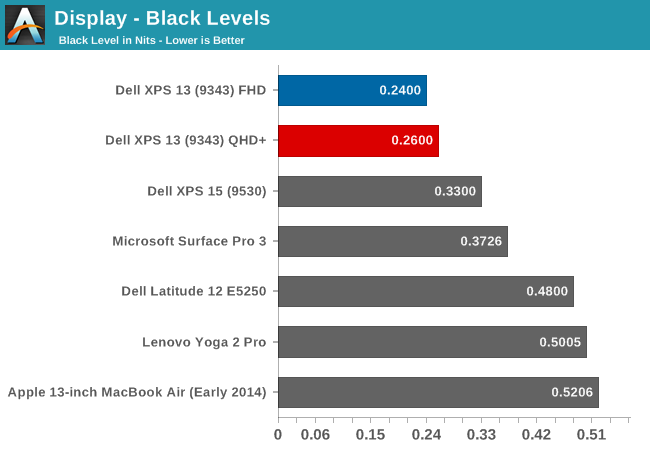
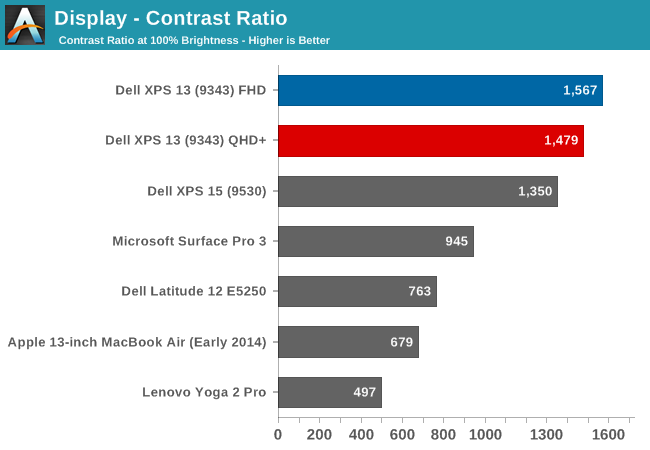
Both displays get very bright. Dell claims 400 nits brightness on the XPS 13 and we measured almost that much. Also, the black levels were very good on both displays, giving a contrast ratio close to 1500:1 on both units. Minimum brightness is around 16-17 nits on both models as well, so there is quite a bit of range on the displays to let them work on almost any situation.


On the QHD+ version, grayscale is a decent result, coming in around delta E of 3. The gamma unfortunately really drops off at the upper end of the range. The color temperature is a bit warm, and as the chart shows, the greens are a bit high. The FHD model does not fare so well, with the gamma going quite high, and the grayscale DE being almost 6.
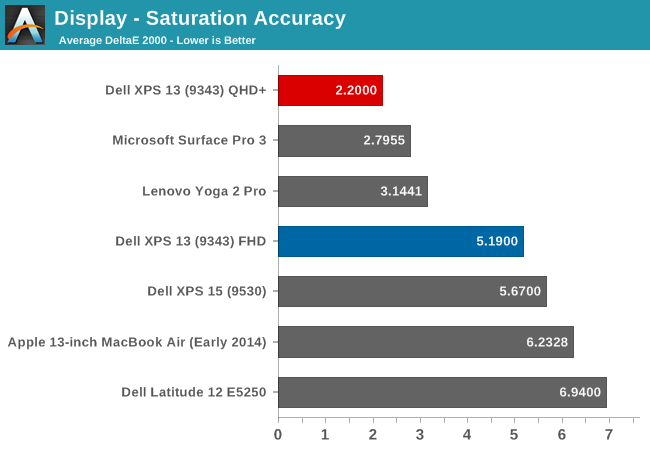
Dell does well on the saturations, with both displays being able to do the entire sRGB color space. Once again, the QHD+ model scores a lot better, with the saturation a very nice 2.2 dE, while the FHD version is closer to 5 - not an awful result, but much worse than the upgraded model.
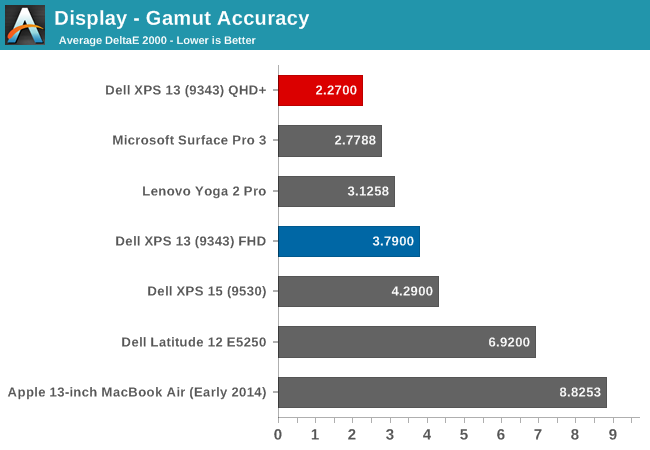
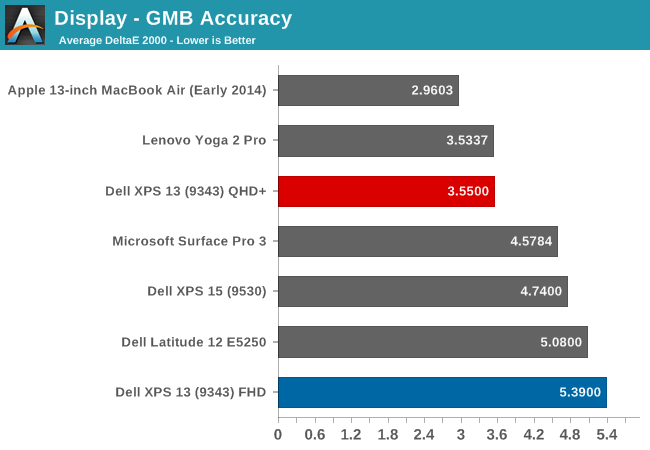
Wrapping up with the Gretag Macbeth results, again the QHD+ model does very well, with the FHD model just average. I have to note though, that even though the GMB score was very good on the QHD+ model, all of the colors that were off, with some of them around DE of 6, were the skin tones. Without calibration, anyone wanting to use this for photo editing may not much enjoy it, and with the auto-brightness issue, the calibration will not work so there is no way to see if the scores improve after calibration.
The Infinity Display is certainly one of the defining characteristics of the XPS 13, and especially with the QHD+ version the color accuracy and other characteristics are quite good. The Auto-Brightness is certainly an issue, and hopefully Dell will offer up a way to disable this either in software or the BIOS soon.


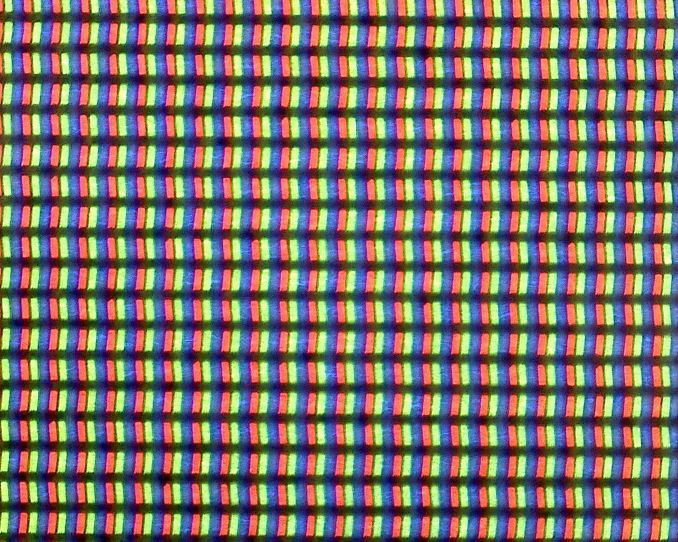
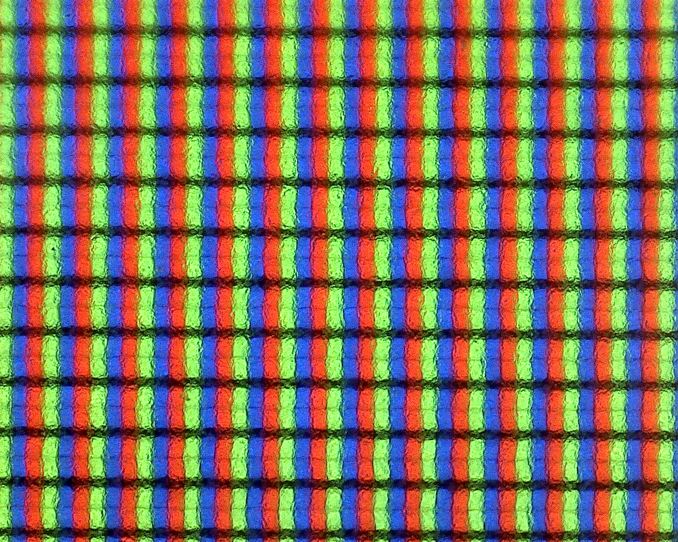
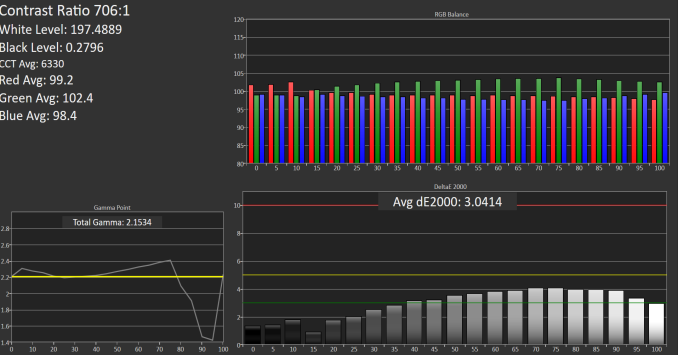
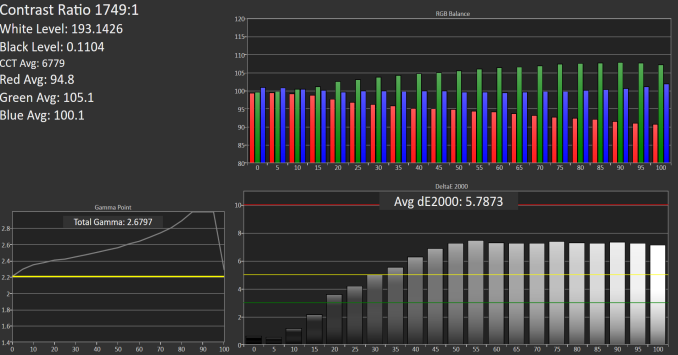
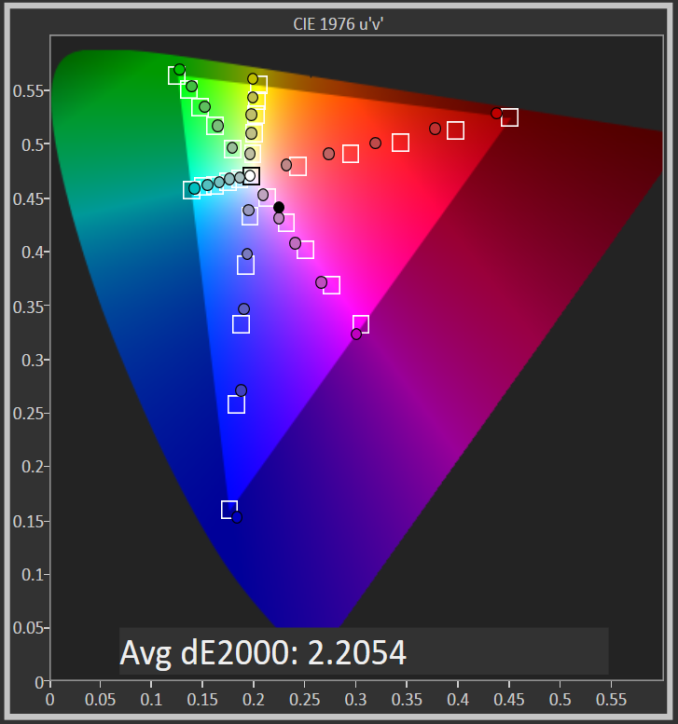

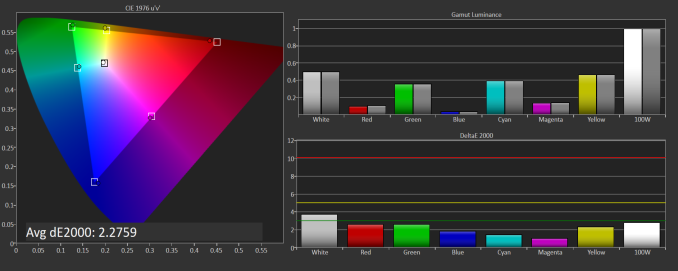
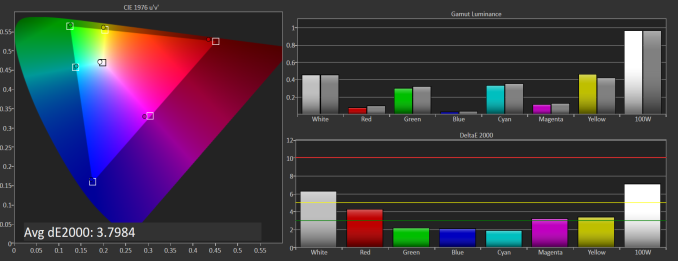

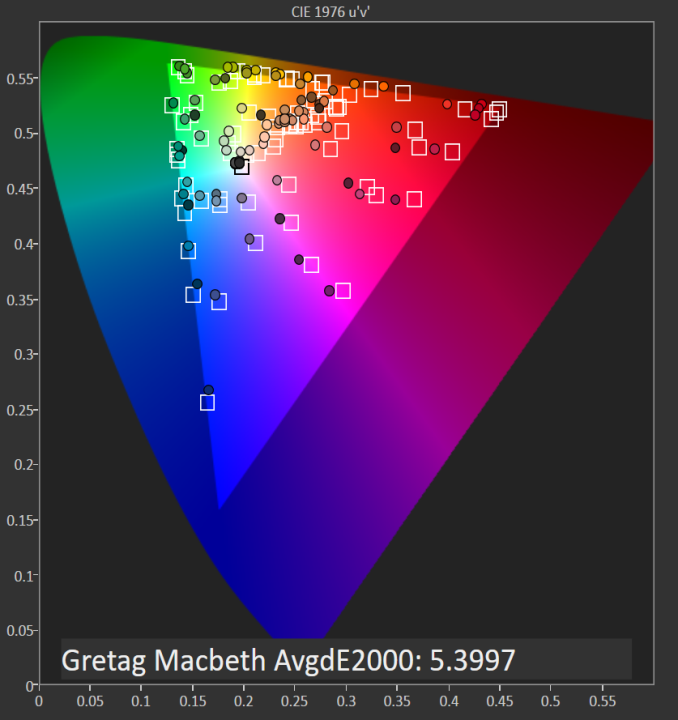








201 Comments
View All Comments
Alexvrb - Thursday, February 19, 2015 - link
I like the idea of a flip-up webcam.OrphanageExplosion - Friday, February 20, 2015 - link
Any thoughts on the keyboard flex seen in the LinusTechTips vid? Makes the unit look really flimsy and I *really* wanted to upgrade to this from my 2012 MBA...Black Obsidian - Friday, February 20, 2015 - link
Watch that video again, and look at how much flex is being exhibited by the table itself. It's not all (or even mostly) the keyboard. Something's flimsy alright, but it's not the keyboard.In my experience, the new XPS13 does have more keyboard flex than the MBA, but but only slightly, and it's far from being a deal-breaker.
cump - Friday, February 20, 2015 - link
I have a 2011 mba and the xps 13 doesn't feel flimsy at all imo.Dug - Friday, February 20, 2015 - link
So under Power Options- Change advanced power settings- Display- Enable adaptive brightness- Setting: Off doesn't work?eanazag - Monday, February 23, 2015 - link
The comparison is totally confusing. Dell has much better battery life, but Surface is still on Haswell. Surface has a touch screen plus pen, but the keyboard is a necessary $130 add-on. USB ports are not similar. The base Dell wireless doesn't have Bluetooth, but Surface does. Webcam placement can be a big deal; while Surface has front and back cams. Surface can be had with a docking station designed for it.This would be a tough choice between either device.
Personally, I hate click pads. I don't care where; I just don't like them anywhere.
uditrana - Wednesday, April 29, 2015 - link
Also Microsoft Store has had a 100$ price cut on the models they have for a while now.ingwe - Thursday, February 19, 2015 - link
Wow this looks great for a travel laptop! I wish that the 256 Gb hard drive and 8 Gb RAM were standard but oh well.There seems to be a lot of good options for high end mobile right now. Between this Dell, the Razer, Surface Pro, and Apple's line up I don't know what I want my next upgrade to be. (I get these are all very different options, but they all seem to be executed really well).
Duraz0rz - Thursday, February 19, 2015 - link
Wow. I don't really need a laptop, but this really makes me want one. I don't really do a whole lot on my desktop any more, really, so I might actually consider it or the Surface Pro 3's Broadwell refresh (assuming there is one).ymcpa - Thursday, February 19, 2015 - link
Judging by the recent price drops and trade-in promotions for the Surface pro 3, a refresh might show up pretty soon.